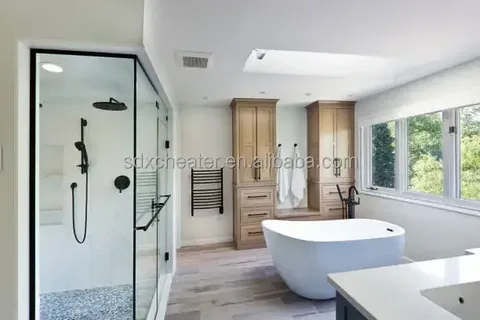Upgrading your bathroom is one of the most rewarding home improvement projects. It can improve functionality, increase property value, and enhance your daily living experience. However, understanding the bathroom upgrade cost breakdown: materials, labor, and more is essential to plan your budget wisely and avoid unexpected expenses.
The Average Cost of a Bathroom Upgrade
A standard bathroom renovation can range from $6,000 to $25,000, depending on the scope of work, location, and materials chosen. Luxury upgrades or complete remodels may even exceed $30,000. Breaking down the costs into categories helps clarify where your money goes.
1. Material Costs
Materials typically account for 50% to 60% of your total bathroom renovation cost. These include:
Fixtures and Fittings
- Toilet: $150 – $800
- Vanity and Sink: $300 – $2,000
- Shower/Tub: $400 – $5,000
- Faucets and Hardware: $100 – $1,000
Finishes
- Tile (floor/wall): $2 – $25 per sq. ft.
- Paint: $30 – $60 per gallon
- Lighting: $50 – $500+
Upgrading to high-end materials like marble tiles or designer fixtures can significantly increase costs.
2. Labor Costs
Labor makes up about 30% to 40% of the total cost. This includes skilled trades such as:
- Plumbers: $50 – $200/hour
- Electricians: $40 – $150/hour
- Tilers: $4 – $15 per sq. ft.
- General Contractors: 10%–20% of the total project cost
Keep in mind that older homes may require extra labor for plumbing or electrical updates to meet current codes.
3. Additional Costs to Consider
Besides materials and labor, there are other factors that contribute to the bathroom upgrade cost breakdown: materials, labor, and more:
Permits and Inspections
Depending on your location, permits can cost between $100 and $1,000.
Demolition and Disposal
Removing old fixtures and tiles may add $500 – $2,000 to your bill.
Design Services
Hiring a bathroom designer? Expect to pay $50 – $200/hour or a flat fee.
Budgeting Tips for Your Bathroom Upgrade
To keep your renovation on track:
- Get at least three quotes from contractors
- Plan for a 10–20% contingency for unexpected expenses
- Prioritize upgrades that add value, like walk-in showers or double vanities
- Opt for mid-range finishes for the best cost-to-value ratio
Final Thoughts
Understanding the bathroom upgrade cost breakdown: materials, labor, and more is key to making informed decisions and avoiding financial surprises. By carefully evaluating your choices and working with reliable professionals, you can transform your bathroom into a space that’s both functional and luxurious—without breaking the bank.





















Leave a Reply